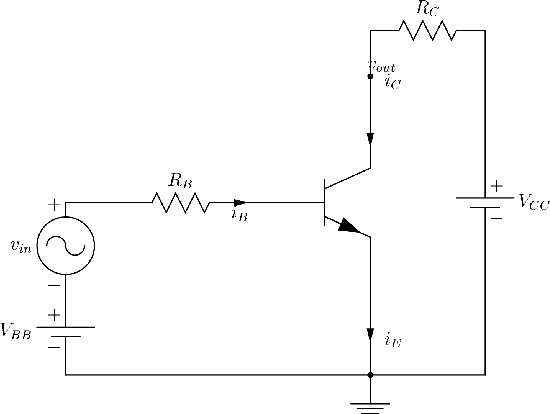 |
When the DC operating point Q is in the active region, the transistor can act as an amplifier to AC signals. For such purpose, Q should be set midway between Qsat and Qcutoff to allow for the maximum possible voltage excursions.
Let's analyse this by considering an AC source vin added to the circuit of Figure 96, see Figure 104 (please note that this is not a practical circuit; just one we use here to teach ideas).
We will use the AC hybrid-![]() model from Section 8.2.4.
It is convenient to re-draw the circuit showing only the AC signals, Figure 105.
Here, the DC sources have been zeroed out; the AC component does not see them.
model from Section 8.2.4.
It is convenient to re-draw the circuit showing only the AC signals, Figure 105.
Here, the DC sources have been zeroed out; the AC component does not see them.
By KVL around the left loop we get
Equation (99) says that the input voltage vin is amplified at the output
(i.e. collector voltage vc) by a gain factor
It is instructive to visualise the operation of the amplifier on the load line. When vin=0 the transistor is at the DC operating point Q. As vin increases, the operating point moves up and to the left along the load line, and when vin decreases it moves down and to the right, Figure 106. Clipping of the waveform will occur if the operating point reaches either of the extremes Qsat or Qcutoff.
Exercise. Determine the maximum value of vin before clipping occurs.
ANU Engineering - ENGN2211